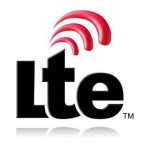Hulu makes a desktop client

After Boxee tried to pull studio-encumbered Hulu out of the browser and into a media center application, Hulu has released a desktop application for Windows and Mac.
Today, the beta of Hulu Desktop was released, a Flash 9-based application that allows users to browse and consume the popular streaming TV site's content with a Windows Media Center- or Apple Remote.
Sony Ericsson produces a 12 megapixel monster

Sony Ericsson today officially announced Satio, its new 12 megapixel camera-equipped flagship mobile device that was formerly known as Idou.
All the details of the S60-based device have been revealed. Formerly, it was simply known as a 3.5" 16x9 touchscreen device with the aforementioned high pixel density camera and associated xenon flash that dropped Sony Ericsson's customary M2 memory card in favor of MicroSD.
Microsoft re-invents itself in search with Bing

Today, Microsoft officially unleashed Bing upon the world. It's a brand that will be associated with intelligent search, and is hence classified as a "Decision Engine," rather than a search engine. Rollout of the new service (to be located at www.bing.com) begins over the next few days and will be completed in under a week, with the target deployment date of June third.
Click the Bing logo for slideshow.
Google shows off Android 2.0

During the keynote at Google I/O yesterday, Android Interface Toolkit Engineer Romain Guy provided a first look at three big developments in Google's open source mobile OS which will be part of the 2.0 update, codenamed "Donut."
The first new feature Guy showed off was "Android Search," a universal search tool that allows contact information, applications, songs, and more in-phone content to be located in addition to content on the Web. It's not unlike the "Spotlight" feature that is included in the iPhone 3.0 update. The most recent and most-frequently searched terms come in a pre-populated list when Search is launched.
A look at Eeebuntu Base 3.0

Download Eeebuntu Base Edition 3.0 from Fileforum now.
Eeebuntu is a custom Ubuntu distro optimized for use on Asus' Eee PC line of netbooks. By incorporating Ubuntu with the Array Kernel and EeeConfigure, Eeebuntu eliminates much of the massaging Ubuntu would require to fully work on Asus' popular netbook.
Adobe brings its own PowerPoint-style app to the cloud

Acrobat.com Presentations offers way to create simple Flash-based slideshow presentations online which can be worked on by numerous Adobe.com members simultaneously and then be presented from their online location or exported as .PDF files for offline use.
The app's interface is similar to Adobe's Web-based Photoshop Express, and provides a comparable level of functionality: basic, but elegant and aesthetically pleasing. While the same Adobe user ID can be used to access both Presentations and Photoshop Express, the two applications are actually separate branches of Adobe's growing arsenal of Web-based services.
AT&T announces 7.2 Mbps HSPA upgrade

It has been one year almost to the day that AT&T completed its initial HSPA rollout, adding 800 Kbps HSUPA. As was promised on the operator's roadmap, the company announced its next network upgrade will begin later this year.
This upgrade will increase HSPA's maximum downlink speed from 3.6 Mbps to 7.2 Mbps, which will pull AT&T up into the majority bracket of HSPA operators (or those whose speeds max out at 7.2 Mbps or higher), and consequently increase the global average speed due to the company's ballooning subscriber base of more than 78 million.
Microsoft plies Mediaroom on rural IPTV operators

Today, Microsoft announced that its Mediaroom IPTV platform now supports virtualization, which will facilitate cheaper IPTV deployments with a faster time to market.
Microsoft's IPTV platform has never been a huge sensation, despite its considerably strong portfolio of capabilities which include time shifting, video on demand, six-channel simultaneous channel view, and home media sharing. Since debuting as Mediaroom (its sixth brand name change) in mid-2007, it has been adopted by 20 major IPTV providers worldwide, and has over three million households using it. With today's announcement, Microsoft is making a play at the smaller regional service provider.
Skyfire 1.0 mobile browser launches today

Since launching in public beta last September, full-featured mobile browser Skyfire has been installed by more than a million North Americans. Today, the official first version has been released, and is available for free on Windows Mobile 5 and 6, and Symbian S60 3rd Edition handsets.
Skyfire has striven to provide a PC-like browsing experience on phones since its earliest stages. All pages are rendered on Skyfire's servers instead of in-phone, and it supports Flash 10, Silverlight 2, Ajax, and JavaScript, making most rich media fully available even on 2G data connections.
Touchscreen Zune touches down

The new Zune's HD qualities are twofold. First, it contains a built-in HD radio for receiving terrestrial multicasts, and second, it will have an HDMI-equipped dock for 720p high definition video output.
Though these are the qualities that give the device its "HD" name, they are somewhat overshadowed by the Zune's other new features: the upgrade to a multi-touch interface, support for full Web browsing, and Xbox Live integration.
Android apps run in an Ubuntu netbook

Talk of non-smartphone devices running Android has been commonplace in the last few months. From tiny companies like Guangzhou Skytone Transmission Technologies, which is expected to release an ARM-powered netbook driven by Android, to the ultra-mega computer giants like Dell with its Android-equipped Mini 10, the "DroidBook" is not far from reality.
But today, Ubuntu sponsor Canonical showed a different approach: making Android applications usable in Ubuntu Netbook Remix. The Ubuntu Developer Summit (UDS) takes place in Barcelona this week, and the focus is expected to be Ubuntu 9.10 (a.k.a., Karmic Koala), which was released in alpha earlier in May (downloadable from Fileforum now). However, three sessions at the convention are reportedly dedicated to development for, and compatibility with Android.
Is Motorola saving money by skipping Windows Mobile 6.5?

According to documents purportedly leaked by AT&T, a Motorola handset originally slated to run Windows Mobile has changed Operating Systems mid-stream, and will be released with Android by the end of 2009's third quarter. The "Iron Man," or "Heron" as it's called on the AT&T document, includes all the Windows Mobile specs (IE6, Pocket Outlook, Exchange ActiveSync) with the caveat "Specifications subject to change due to move to Android."
Both Motorola and AT&T declined comment today.
LTE competition heats up as Swedish MNO opens first site

In Stockholm, Sweden today, mobile network operator TeliaSonera and wireless infrastructure leader Ericsson unveiled the first site in Sweden's forthcoming 4G LTE network, expected to go live in 2010 with deployments in Stockholm and Oslo.
The process has picked up considerable steam recently. It was only four months ago that TeliaSonera announced its first LTE contracts, which included Ericsson and Chinese telecommunications hardware provider Huawei. Just a month later in the US, Verizon named its LTE partners, which also included Ericsson, as well as Alcatel-Lucent, Starent Networks, and Nokia-Siemens.
A rocky start for Nokia's Ovi Store

Fulfilling the promise it made in February, Nokia has opened its Ovi Store to most of the world before the close of May. Users of any of 50 different Nokia handhelds can either download the Ovi Store mobile app by selecting the icon in the device's Download Folder, or by navigating to store.ovi.com in their browser.
Like the app stores of competing devices, The Ovi Store offers both free and paid content such as games, videos, podcasts, productivity tools, as well as web-based and location-based services and applications. Apps can be purchased either through operator billing or through direct credit card billing.
The future of RealDVD Jukebox hangs on one judge's decision

In 2007, RealNetworks began to develop a set-top DVD archiver/player similar to Kaleidescape under the project name "Facet." It was this idea that spawned the creation of RealDVD, a piece of software that allows copy-protected DVDs to be copied, compressed, and saved on a user's hard drive. However, that software was temporarily pulled off the market thanks to a copyright infringement suit from the DVD Copy Control Association and six major Hollywood studios (Disney, Paramount/Viacom, Sony, 20th Century Fox, Universal, and Warner Bros.).
The suit began last October and has involved relentless mudslinging between the parties. In the beginning, the studios claimed the product should have been called "StealDVD," and that it "clearly violate[s] the law." Most recently, RealNetworks called the six Hollywood studios "an illegal cartel," and charged them with antitrust violations.
Tim's Bio
Tim Conneally was born into dumpster tech. His father was an ARPANET research pioneer and equipped his kids with discarded tech gear, second-hand musical instruments, and government issue foreign language instruction tapes. After years of building Frankenstein computers from rubbish and playing raucous music in clubs across the country (and briefly on MTV) Tim grew into an adult with deep, twisted roots and an eye on the future. He most passionately covers mobile technology, user interfaces and applications, the science and policy of the wireless world, and watching different technologies shrink and converge.
© 1998-2025 BetaNews, Inc. All Rights Reserved. About Us - Privacy Policy - Cookie Policy - Sitemap.
